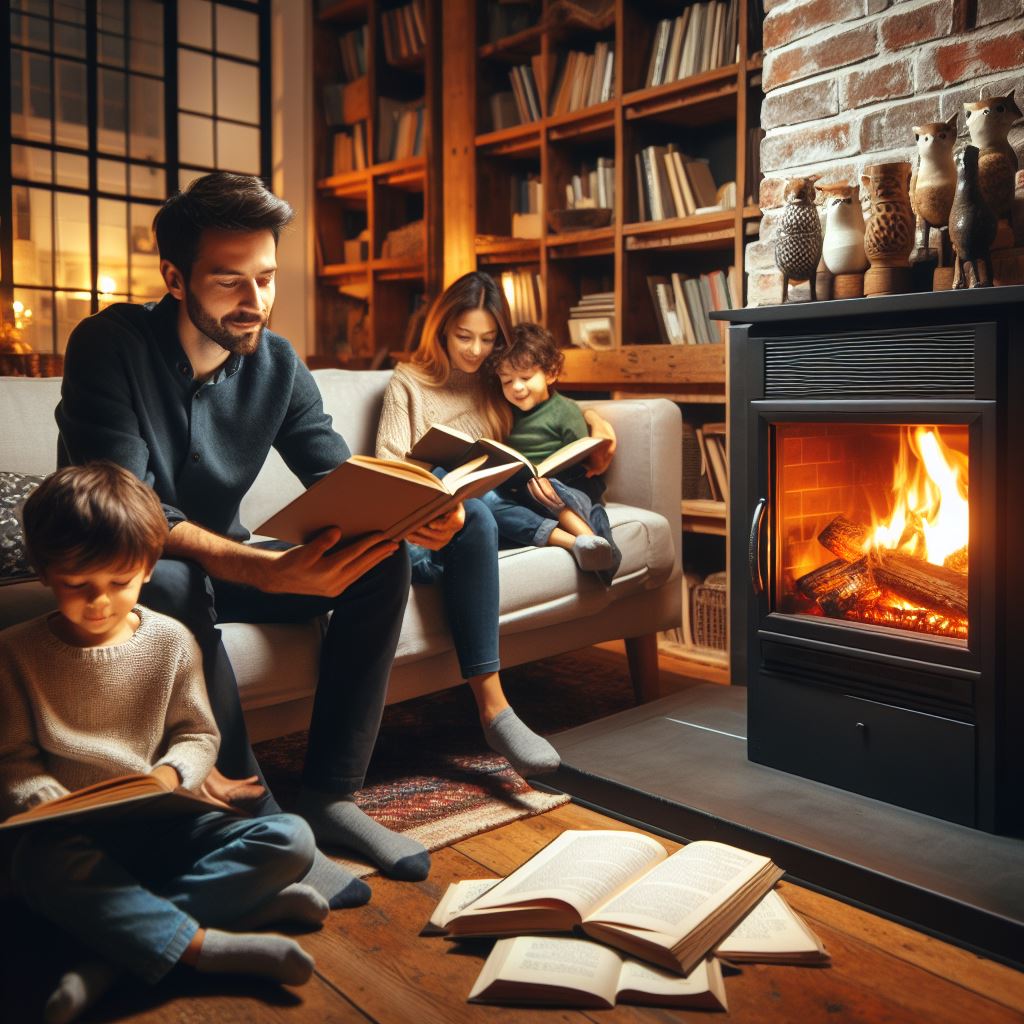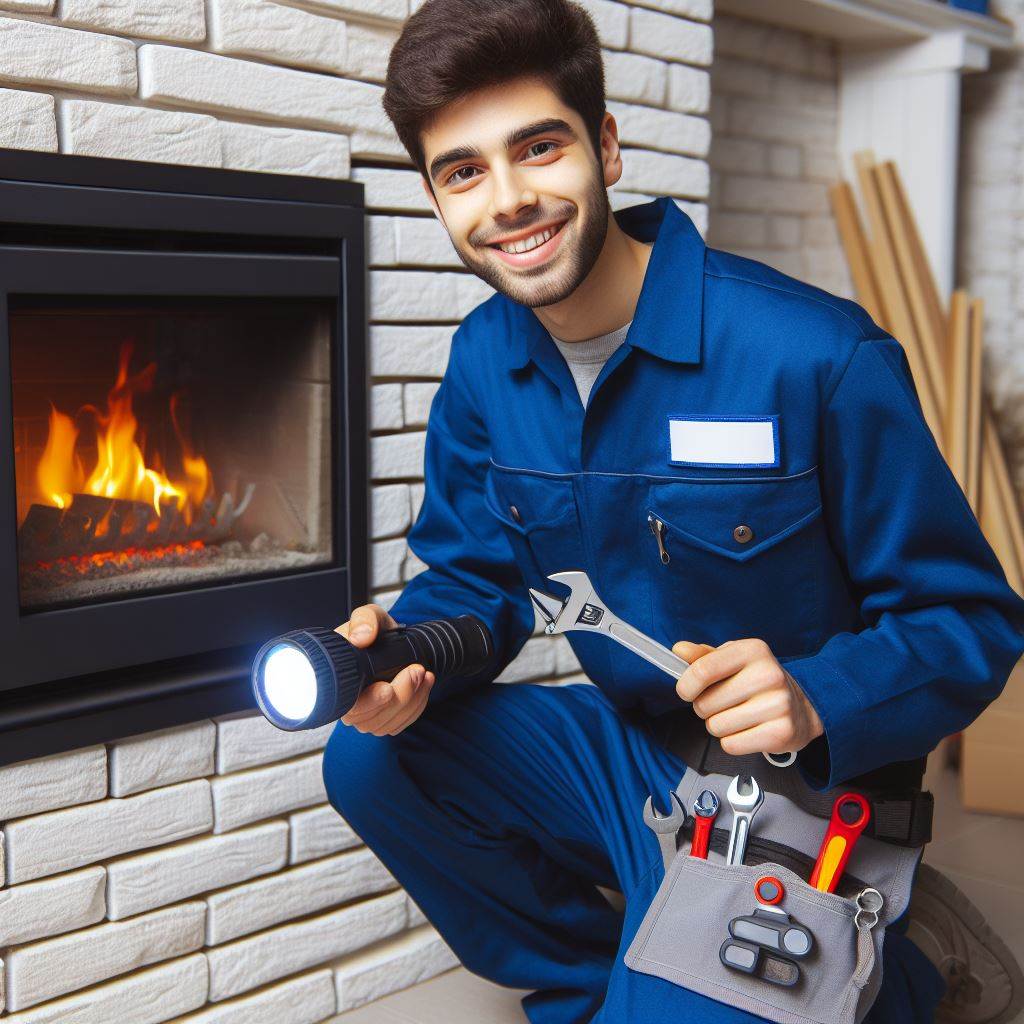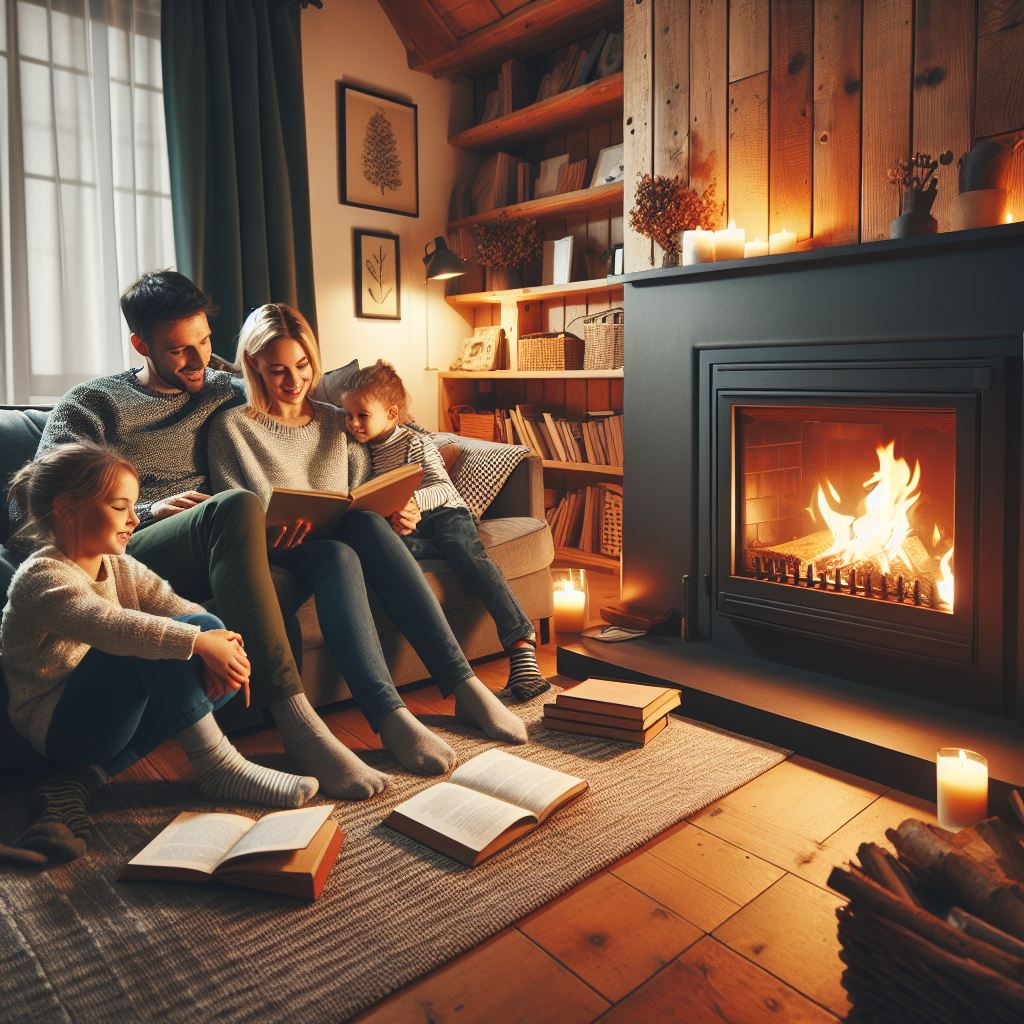There’s nothing quite like curling up by a warm fireplace on a chilly evening. The flickering flames, the gentle heat, and the crackling logs (in the case of gas fireplaces with decorative logs) create a truly inviting atmosphere. But what happens when that peaceful ambiance is disrupted by a fluttering noise coming from your gas fireplace? It can be a cause for concern, interrupting your relaxation and raising questions about safety.
While a fluttering noise from your gas fireplace isn’t ideal, it’s usually not a cause for panic. In most cases, the issue can be addressed with some simple troubleshooting or by calling in a qualified technician. This article will highlight seven main culprits behind a fluttering gas fireplace and provide solutions to get your fire crackling peacefully once more.
The Science Behind the Flutter: Understanding Gas Fireplace Operation
Before we dive into troubleshooting, let’s take a quick look at how a gas fireplace works. Unlike traditional wood-burning fireplaces, gas fireplaces utilize natural gas or propane to create flames. The gas flows through a pipe to a burner assembly, where it mixes with air and ignites with the help of a pilot light. The decorative logs or fire media (such as rocks) placed within the fireplace help disperse the heat and create a realistic flame effect.
Now, for a smooth and steady flame, several factors need to be in balance. These include:
- Airflow: Proper airflow is essential for complete combustion of the gas. A sufficient amount of air needs to reach the burner to ensure clean and efficient burning.
- Gas Pressure: The gas pressure needs to be within the manufacturer’s specifications for the fireplace model. Too much pressure can lead to excessive flames, while insufficient pressure can cause weak or flickering flames.
- Pilot Light and Burner Function: The pilot light ignites the gas, and the burner ensures proper mixing of gas and air. Any malfunction with these components can disrupt the flame pattern.
Summary Table: Causes and Solutions for Fluttering Noise in Gas Fireplaces
| Cause | Description | Solution | Safety Precautions |
| Venting Issues | Clogged flue or vents restrict airflow, causing erratic flames. | Contact a qualified chimney sweep for cleaning and inspection. | Turn off fireplace and let it cool before any work. |
| Pilot Light or Burner Problems | Dust and debris buildup interferes with gas and air flow, leading to uneven burning. | Turn off fireplace and let it cool. Gently clean pilot light and burner with a soft brush (refer to user manual). | Never use water or cleaning chemicals. |
| Incorrect Gas Pressure | Too high or low gas pressure disrupts flame stability. | Do not adjust gas pressure yourself. Contact a qualified gas appliance technician. | |
| Loose Components | Loose screws or fasteners in burner assembly or other components can vibrate and rattle. | Turn off fireplace and let it cool. Tighten loose screws/fasteners using appropriate tools (refer to user manual). | Avoid overtightening. |
| Improper Log Placement | Incorrect log arrangement disrupts airflow to burner. | Refer to user manual for proper log placement instructions. | |
| Draft Issues | Drafts pull air away from burner, affecting gas-air mixture. | Close nearby windows, doors, or vents. | |
| Faulty Gas Valve | Malfunctioning valve disrupts gas flow, causing uneven burning. | Do not attempt to repair the valve yourself. Contact a qualified gas appliance technician immediately. |
7 Common Causes of Fluttering Noises in a Gas Fireplace
When the delicate balance of these factors is disrupted, you might hear a fluttering sound coming from your fireplace. Now let’s look at the seven most common culprits in more detail:
- Venting Issues: The flue and vents are responsible for removing combustion byproducts and ensuring proper air circulation. If the flue or vents become clogged with debris, such as leaves, twigs, or even bird nests, airflow can be restricted. This restriction can cause the flames to become erratic and flutter.
- Pilot Light or Burner Problems: Over time, the pilot light and burner assembly can accumulate dust, dirt, and debris. This buildup can interfere with the proper flow of gas and air, leading to uneven burning and a fluttering sound.
- Incorrect Gas Pressure: As mentioned earlier, gas pressure plays a crucial role in maintaining a steady flame. If the gas pressure is too high, it can cause the flames to roar and flutter. Conversely, low gas pressure can lead to weak and flickering flames that may also produce a fluttering sound.
- Loose Components: The burner assembly and other internal components of your gas fireplace are secured with screws or fasteners. Over time, these connections can loosen due to vibrations or thermal expansion and contraction. Loose components can vibrate and rattle, creating a fluttering noise.
- Improper Log Placement: While decorative logs in a gas fireplace add a touch of realism, their placement can also affect airflow. If the logs are crammed together or positioned incorrectly, they can disrupt the flow of air reaching the burner, potentially causing the flames to flutter.
- Draft Issues: Drafts from open windows, doors, or vents near the fireplace can pull air away from the burner, affecting the gas-air mixture and causing the flames to flutter.
- Faulty Gas Valve: The gas valve regulates the flow of gas to the burner. If the valve malfunctions, it might not deliver a consistent gas flow, leading to uneven burning and a fluttering sound.

Solutions to Silence the Fluttering: A Step-by-Step Guide
Now that you understand the potential culprits, let’s explore solutions for each cause:
- Venting Issues: Safety First! Turn off the fireplace and allow it to cool completely before attempting any troubleshooting. Do not attempt to clean the flue yourself. It’s recommended to contact a qualified chimney sweep for professional cleaning and inspection of the flue and vents.
- Pilot Light or Burner Problems: Turn off the fireplace and allow it to cool completely. Consult your user manual for specific cleaning instructions. Typically, you can use a soft brush to gently clean any dust or debris from the pilot light and burner orifices. Never use water or any cleaning chemicals. If you’re uncomfortable cleaning these components yourself, consult a qualified technician.
- Incorrect Gas Pressure: Never attempt to adjust the gas pressure yourself. Gas pressure adjustments require specialized tools and expertise. Adjusting the pressure incorrectly can be dangerous and lead to gas leaks or even explosions. In this case, contact a qualified gas appliance technician to diagnose and adjust the gas pressure as per the manufacturer’s specifications.
- Loose Components: Once again, turn off the fireplace and allow it to cool completely before proceeding. Refer to your user manual for a diagram of your specific fireplace model. The manual should indicate the location and type of fasteners used to secure the burner assembly and other components. Using the appropriate screwdriver or wrench, carefully tighten any loose screws or fasteners. Avoid overtightening, as this can damage the components. If you’re unsure about any aspect of this process, consult a qualified technician.
- Improper Log Placement: Refer to your user manual for proper log placement instructions specific to your gas fireplace model. The manual will likely include diagrams or pictures illustrating the ideal arrangement for optimal airflow and flame performance. By following these instructions, you can ensure that the logs don’t disrupt the air reaching the burner and prevent fluttering noises.
- Draft Issues: This is a relatively simple solution. To minimize drafts that might affect your gas fireplace’s airflow, close any nearby windows, doors, or vents that could be drawing air away from the burner.
- Faulty Gas Valve: A malfunctioning gas valve can be a serious safety concern. If you suspect a faulty gas valve due to persistent fluttering noises or other issues like difficulty igniting the fireplace, do not attempt to repair it yourself. Contact a qualified gas appliance technician immediately for diagnosis and repair. They can assess the valve and determine if it needs repair or replacement.

Safety Precautions: Keeping Your Fireplace a Warm and Welcoming Haven
Troubleshooting a gas fireplace can be tempting, especially if you’re handy around the house. However, it’s crucial to prioritize safety throughout the process. Here are some key safety precautions to remember:
- Always turn off the fireplace and allow it to cool completely before attempting any troubleshooting.
- Never tamper with gas lines or gas pressure regulators. These adjustments should only be done by a qualified technician.
- If you suspect a gas leak, evacuate the area immediately and call your gas company’s emergency line. Signs of a gas leak include a strong gas odor, hissing sounds, or discolored flames.
- Schedule regular inspections and cleanings by a qualified technician. This preventative maintenance can help identify potential problems early on and ensure the safe and efficient operation of your gas fireplace.
Conclusion
When you understand the causes of fluttering noises in your gas fireplace, you can follow the recommended solutions to restore peace and quiet to your cozy haven. Remember, if you’re unsure about any aspect of troubleshooting or suspect a serious issue, don’t hesitate to call in a qualified technician. Their expertise can ensure your fireplace functions safely and efficiently for years to come.
So, the next time you hear a fluttering noise from your gas fireplace, don’t panic. With a little knowledge and the right approach, you can silence the flutter and get back to enjoying the warmth and ambiance of your fireplace. Now, curl up with a good book, sip on a warm beverage, and let the gentle crackle of the flames fill your home with comfort.

